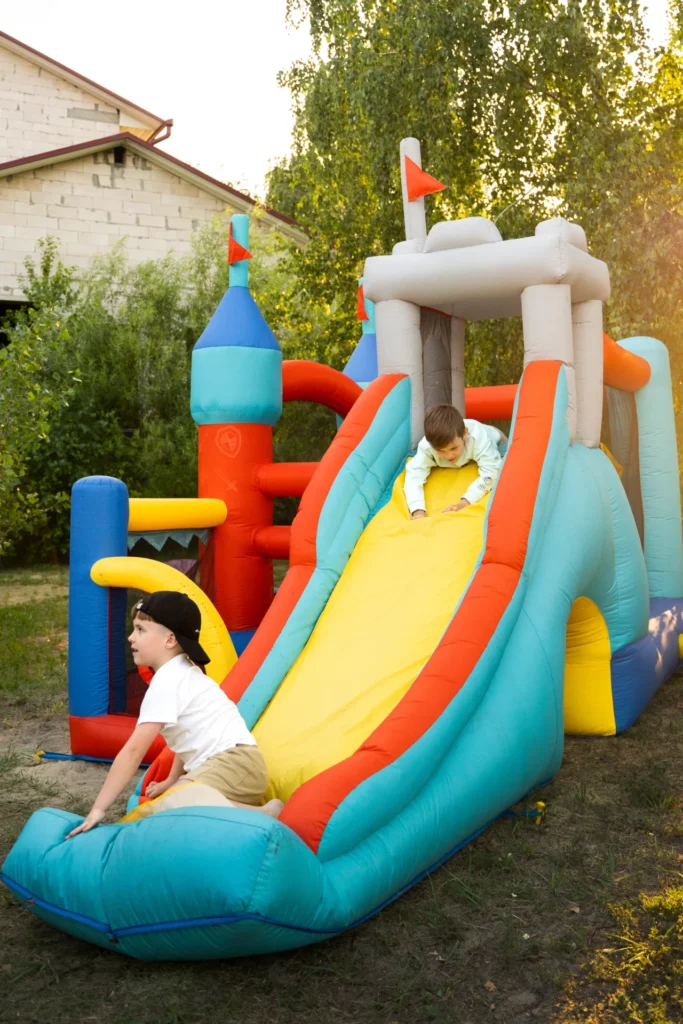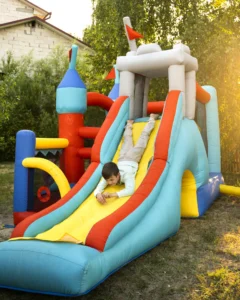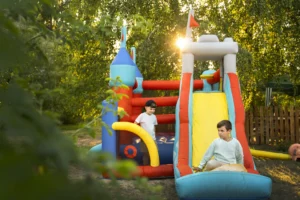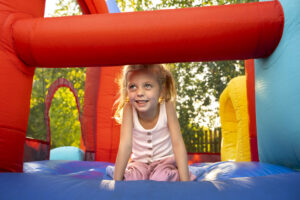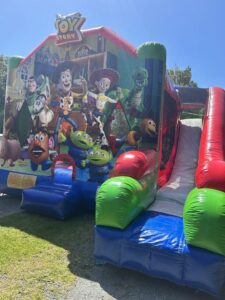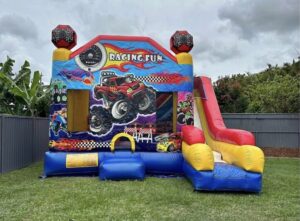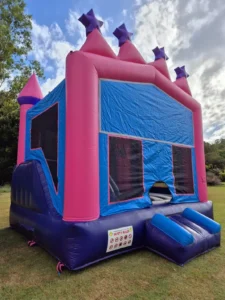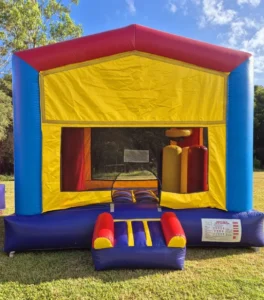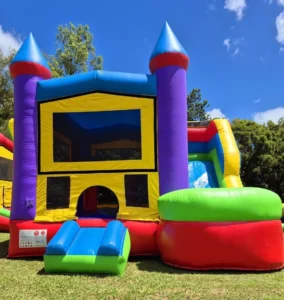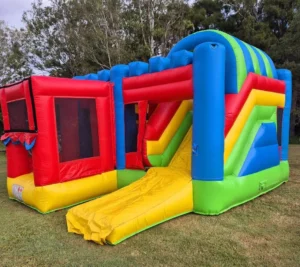Discover the basics
If you love bouncing around on inflatable structures, you might be curious, “what is an obstacle course?” An obstacle course is a series of physical challenges that push you to run, climb, crawl, and jump your way toward a finish line. You might see rope walls, balance beams, or even an inflatable tunnel you have to dash through. It’s a whole different level of fun for anyone who already enjoys the rush of a jumping castle.
Obstacle courses aren’t just for elite athletes or military recruits. From backyard birthday parties to professional Obstacle Course Racing (OCR) events, these setups vary widely in difficulty and length. You decide how intense you want things to be, whether it’s a simple kid-friendly course with crawl tunnels or a more advanced race that pushes your endurance.
Why obstacle courses are worth it
Obstacle courses combine physical and mental excitement. You gain a cardiovascular workout while hopping over walls or crawling under nets, and you sharpen your problem-solving skills by figuring out how to conquer tricky stations. Think monkey bars, tire runs, or wiggly balance boards that require quick thinking.
- Strength and agility boost: Each station tests different muscle groups, from your core to your grip strength.
- Endurance training: Whether you run between obstacles or climb over tall barriers, you’re building stamina.
- Team-building fun: Working in groups builds camaraderie and trust. Cheering each other on through tricky obstacles makes for great memories.
- Family and kid-friendly: Children benefit from improved motor skills, balance, and sensory awareness in these courses. It’s also a playful way to burn off energy.
Common types of obstacles
The word “obstacle” covers a lot of ground. Certain courses, often found at outdoor events, focus on climbing walls, mud pits, or ropes. Inflatable obstacle courses, by contrast, include air-filled tunnels, ramp slides, and bouncy pillars that add a jumping castle feel. Here are a few staples you might come across:
- Rope climb: Great for upper-body strength and grip.
- Balance beams: Test your core while walking on a narrow surface.
- Crawling tunnels: Force you to stay low and engage your arms, legs, and back.
- Monkey bars: Fire up your forearms and build muscular endurance.
These challenges vary by course. More advanced setups can feature multi-rig stations involving rings, bars, and hanging ropes. If you want a taste of everything, inflatable courses may be your best bet because they’re softer underfoot and less intimidating.
How it compares to a jumping castle
You might be wondering how an obstacle course differs from your beloved jumping castle. Both deliver plenty of bounce, but there are some key differences:
- Variety of movement: Jumping castles are mainly about bouncing, while obstacle courses add climbing, crawling, balancing, and swinging.
- Progressive difficulty: Many courses include multiple stages, letting you test your mettle in various ways.
- More physical challenge: Depending on the design, an obstacle course can be a full-body workout, not just a fun bounce.
Still, these two activities pair beautifully at an event—consider adding an obstacle section near your inflatable so you and your friends can jump between bouncing and conquering each station.
Getting started safely
Ready to give it a try? You can find obstacle courses at local gyms, outdoor adventure parks, or even through special-event rentals. For a DIY approach, you can design a smaller setup in your own yard. Start with:
- Simple steps: Place low hurdles to hop over.
- Balance lines: Chalk a line on the ground and practice tiptoeing.
- Crawl zones: Use a short tunnel or a few chairs draped with blankets to create a makeshift crawl space.
If you’re hosting a party, you might also want a more professional setup. Some jumping castle hire providers offer inflatable obstacle courses. Ask about safety features like soft walls, sturdy netting, and secure anchor points. Remember, you want your cheering section to be as confident as you are about tackling each station.
Here’s what is an obstacle course Really Offers
An obstacle course offers an exciting twist on inflatable fun with a side of healthy competition. It’s an adventure that suits nearly any age. Once you’ve conquered the course, you’ll feel more confident in your agility and endurance, and you’ll probably be smiling from ear to ear. If you still crave that bouncy castle thrill, you can always hop back to the inflatable zone or see what new challenges await. Either way, you’ll have a blast that’s equal parts sweat and smiling faces. Have fun out there!
Ready to Bounce? Book Your Castle Today!
Bring unforgettable joy to your next event, free delivery, easy setup, and zero deposit needed. Whether you’re planning a backyard birthday, school fair, daycare learning activities, or neighborhood party, our safe, colorful jumping castles are waiting.
Choose from popular options like our Rainbow Combo, Monster Truck Combo, or Jungle Obstacle Course for endless fun!
Serving Gold Coast, Logan & Beaudesert, plus Northern NSW with competitive delivery charges. Contact us now or submit your booking in just seconds!
Frequently Asked Questions
1. How to make an obstacle course?
To make an obstacle course, choose a safe space, plan fun challenges like crawling, jumping, or balancing, and arrange them in a sequence that suits the participants’ age and skill level.
2. How much is a bounce obstacle course?
A bounce obstacle course price depends on factors like size, features, rental time, and location, but generally ranges from affordable short-term hires to higher costs for larger, feature-packed setups.
3. How to build an obstacle course?
To build an obstacle course, start by measuring the available space and sketching a layout to plan the order and direction of each obstacle. Gather materials such as ropes, cones, mats, boxes, or inflatable sections, depending on the level of challenge you want. Incorporate a mix of obstacle types like crawl zones, jump areas, balance beams, or climbing sections to keep it engaging and fun. Prioritize safety by anchoring loose items, avoiding sharp edges, and ensuring all materials are stable, especially if children will be participating.
4. What is an obstacle course for kids?
An obstacle course for kids is a fun and active setup that challenges children to move through a series of physical tasks, such as crawling under objects, jumping over hurdles, balancing on beams, or climbing small structures. It’s designed to promote physical fitness, coordination, problem-solving, and confidence, all while keeping kids engaged and entertained. Courses can be simple and made from everyday items at home or more structured for events, classrooms, or playgrounds.
5. What is an obstacle and what are some examples?
An obstacle is anything that creates a challenge or barrier that must be overcome, either physically or mentally. In the context of an obstacle course, it refers to physical elements that require participants to climb over, crawl under, jump across, or navigate through. Examples of obstacles include a rope climb, tire run, balance beam, crawling tunnel, monkey bars, wall jump, and cone zig-zag. These challenges are designed to test and build strength, balance, agility, and coordination.
6. What are the learning objectives of the obstacle course?
The learning objectives of an obstacle course include developing physical skills such as balance, coordination, strength, agility, and endurance, while also promoting cognitive and social skills like problem-solving, decision-making, teamwork, and following instructions. For children, obstacle courses support gross motor development and help build confidence, perseverance, and spatial awareness. In group settings, they also encourage communication, cooperation, and fair play.
Key takeaways
- Obstacle courses challenge both mind and body, mixing running, climbing, and crawling.
- Inflatable varieties blend the classic bounce of a jumping castle with fun, race-like stations.
- You can set up a DIY version at home or rent a larger course for events.
- Safety and supervision are crucial, especially for kids.
- Start at your comfort level, then ramp things up as you gain confidence.


